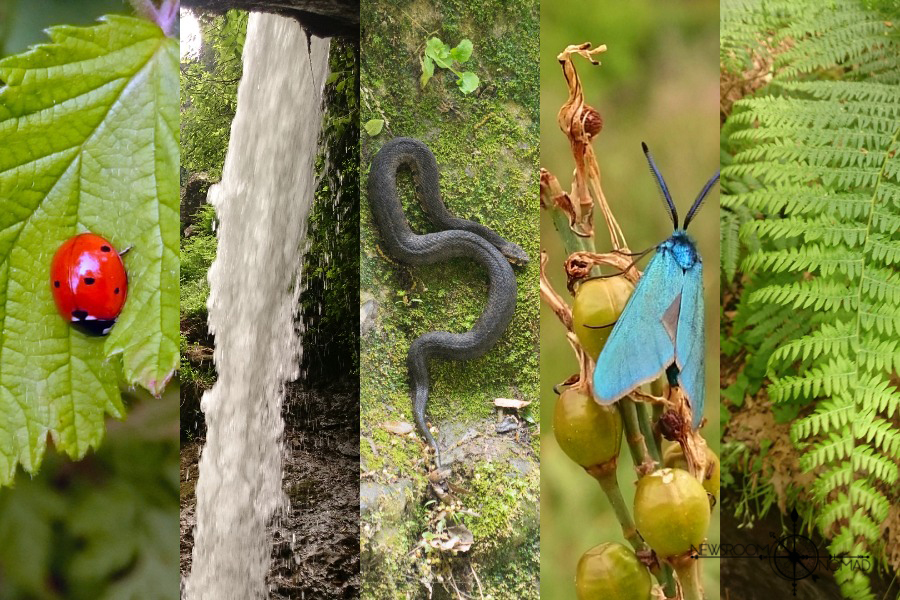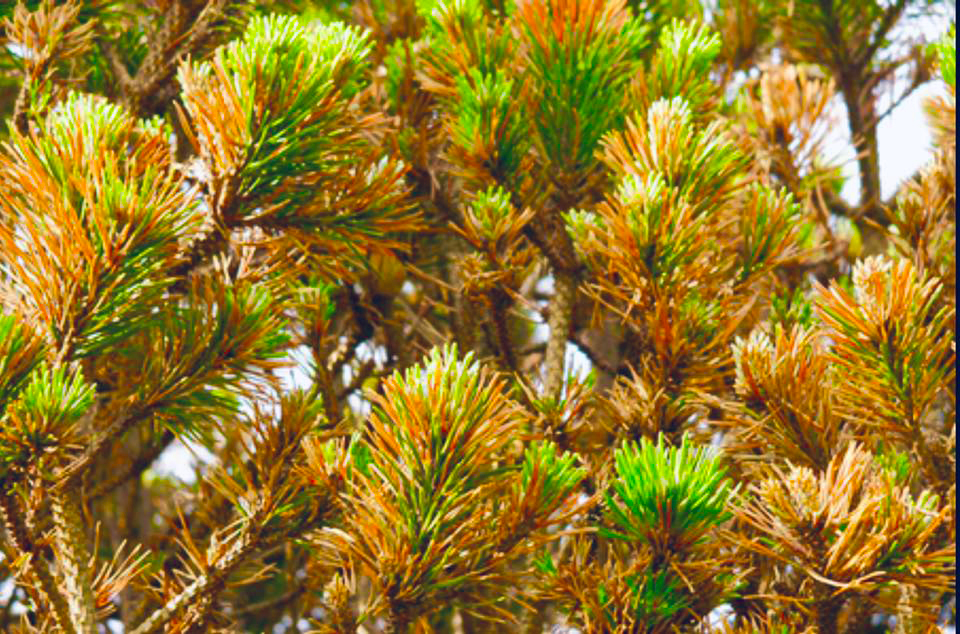This week, the world celebrated Sir David Attenborough’s 91st birthday. The veteran English broadcaster and naturalist, best known for writing and presenting the BBC’s Planet Earth documentary series, among many other works, is often credited with inspiring a generation of conservationists, environmentalists and just regular nature enthusiasts, myself included, to venture out into the natural world and document.
And last week, I did just that: instead of just hiking the mountains, I snapped numerous photos along the way for the purpose of identifying the various plants and animals I and a group of friends had encountered. From Lebanon’s Baskinta in the Metn, we crossed the mountain to Kesserwan’s Baatouta and other smaller villages, enjoying the various landscapes that changed before our very eyes. Upon returning home, I embarked on the challenge to identify all the plants and animals we saw, and thanks to the internet, the help of local botanists and environmentalists, it was a success.
The wildflowers and animals we came across are a window to our heritage. Our ancestors once relied on the medicinal properties of the various wild plants, while also employing some animals to their advantage. This forgotten wisdom played a key-role in their survival, especially through the long, harsh winters.
Disclaimer: Newsroom Nomad can not take any responsibility for any adverse effects from the use of these plants. Always seek advice from a professional before using a plant medicinally. We also recommend that all lengthy hikes be performed under the watchful eye of a professional guide.
A special thank you to ecosystem management and biodiversity conservationist Moustapha Itani (please follow his page to learn more about Lebanon’s plants and habitats), and field botanist Hisham El Zein. Another thank you to environmentalist Dana Sanioura for all her help.
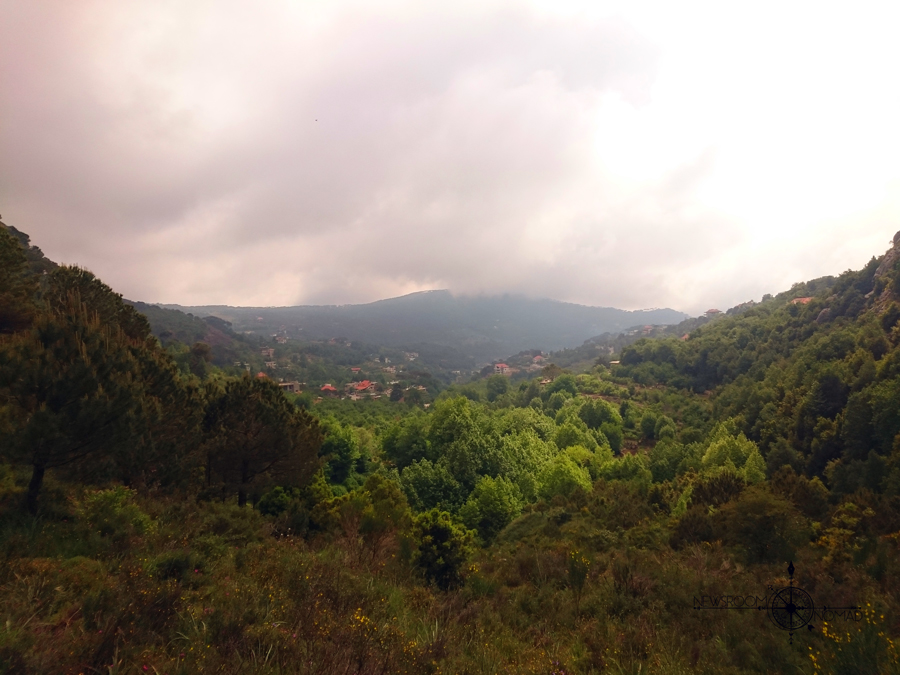
Aside from the medicinal properties of wildflowers and plants, being in nature is itself its own kind of therapy. In his 1984 book Biophilia, Edward O. Wilson presented a theory that says that being in nature is rooted in our genes and biology. This is why we feel better when we’re in forests, away from the noise, the stress and the pollution. At the same time that Wilson put forward his theory, Japanese doctors began to prescribe what is now known as ‘forest bathing’ (the practice of taking a short, leisurely visit to a forest) for better health.
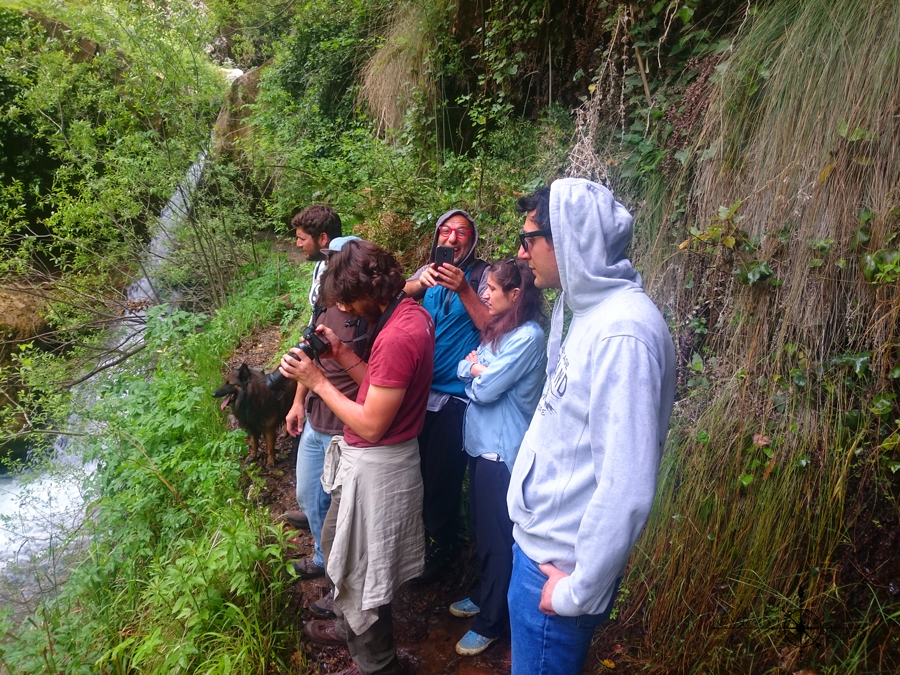
The mountainous region between Metn and Kesserwan is rich and diverse. From rivers you cross into a more arid land, as though going from one biome to another.
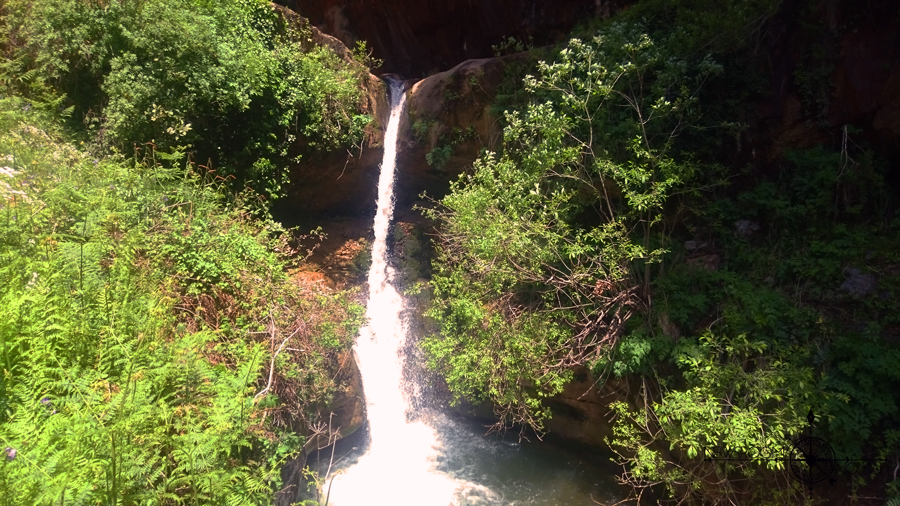
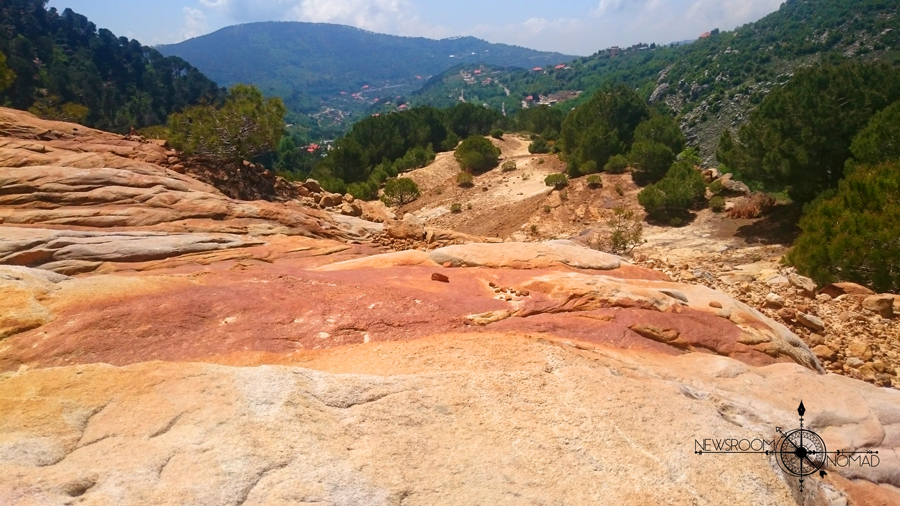
And these are the wild plants we saw along the way.
Lactuca virosa, also known as wild lettuce, Arabic: خس نفاذ
Wild lettuce is a leafy plant native to Europe and the Mediterranean. According to various sources on the internet, the plant has narcotic properties. The ‘medicinal plant’ has been used in folk medicine for hundreds of years for its various healing properties and also as a substitute to opium, hence its name opium lettuce (but, unlike what its name suggests, the plant doesn’t actually contain any opiates and is legal). It gained a lot of popularity for pain relief and recreational purposes. Its sedative effects come from the white substance, called lactucarium, found in the stem and leaves. The compounds in the milky substance act directly on the central nervous system to lessen the feeling of pain. But, before you head out looking for wild lettuce know that its effects are no stronger than a shot of vodka, Deane Jordan, aka Green Deane, forager and author says.
“If you collect a lot of Lactuca virosa sap — not easy — dry it and ingest it you might take the edge off a toothache and fall asleep,” Jordan writes in his blog.
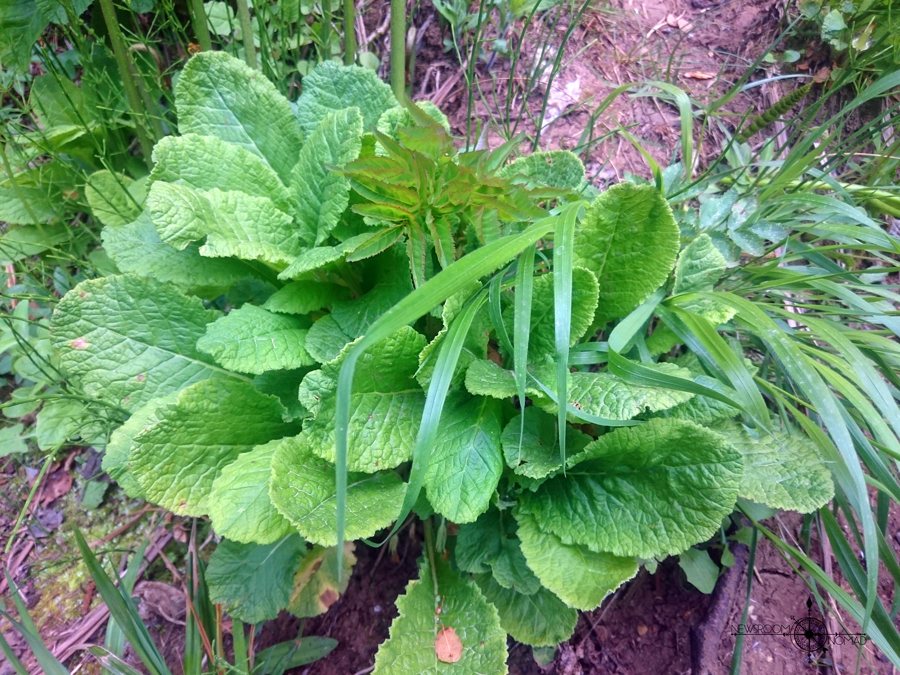
Eremostachys laciniata,
Desert spike, Arabic: ذيل الثعلب,هجنبل
Native to Mediterranean woodlands and shrublands, the desert spike is a rich source of flavonoids and antioxidants. Decoctions from its flowers and roots have properties similar to Sage (Salvia officinalis) and Skullcap (Scutellaria baicalensis), and have been used to treat allergies, headache, arthritis, rheumatoid arthritis, septic arthritis (Riter’s syndrome), liver diseases, bacterium infections and other inflammatory conditions in the form of herbal teas, or tisanes. Chelledaghi is the traditional name given the medicinal plant.
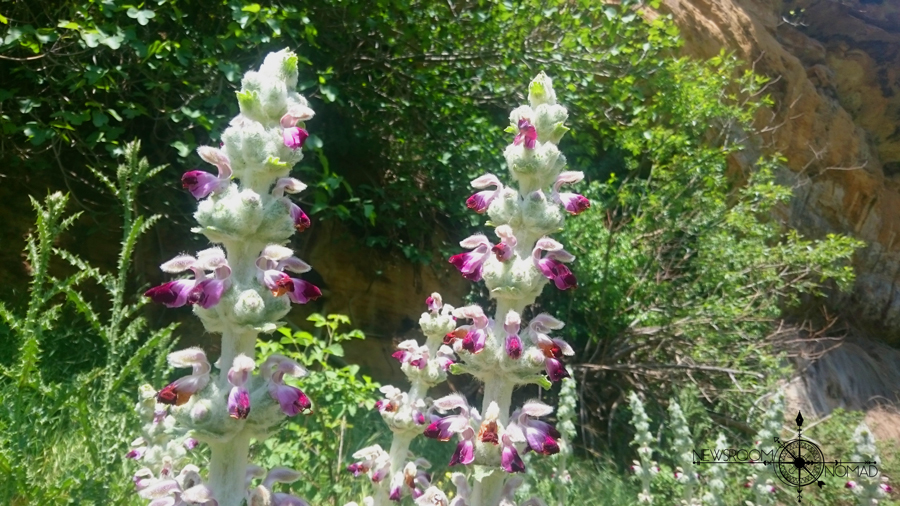
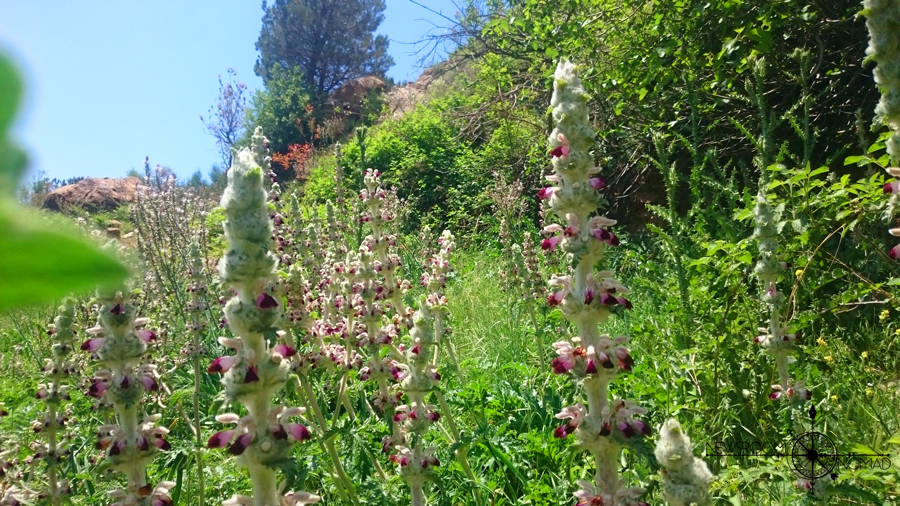
Ferns, Arabic: سرخس
Ferns actually super hard to identify in terms of species, as only the spores, usually on the underside of the leaf, reveal their identity. According to Moustapha Itani, this is most probably a bracken fern (Pteridium aquilinum), a species that was used by Native American tribes for the treatment of rheumatism, tuberculosis, infections, and chest pain. Also, bracken ferns were used to treat uterine prolapse, nausea and vomiting, diarrhea, weakness, stomach cramps, and headaches.
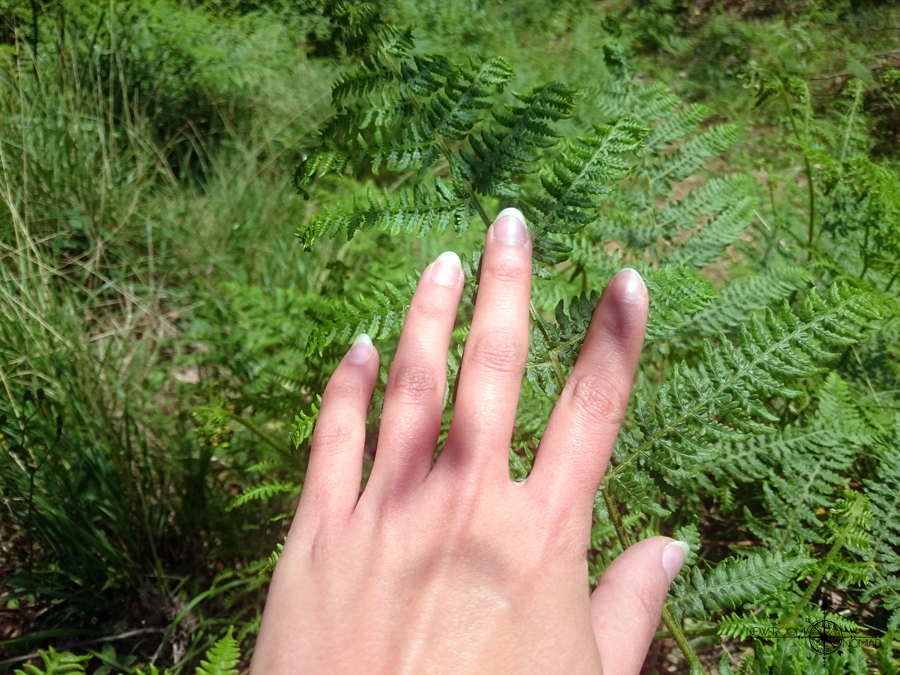
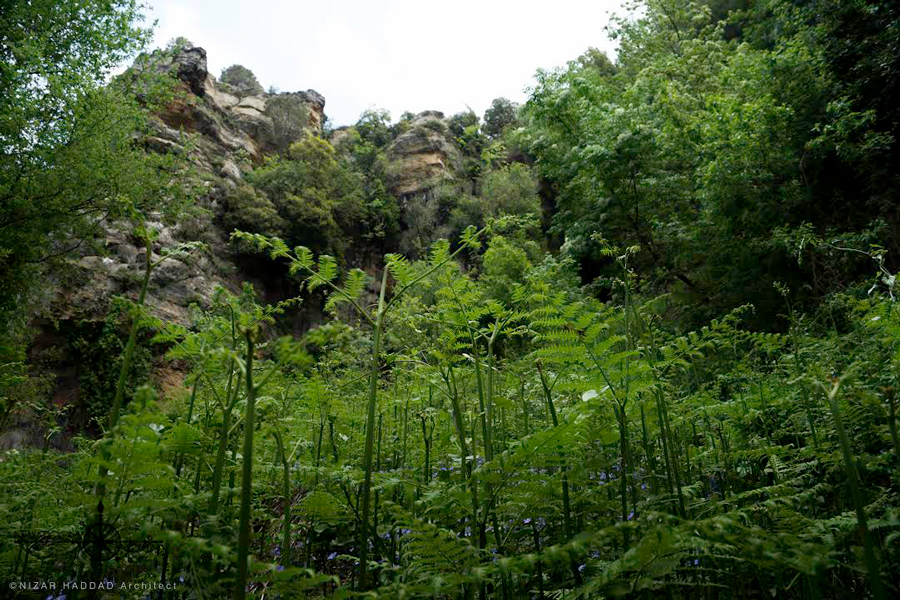
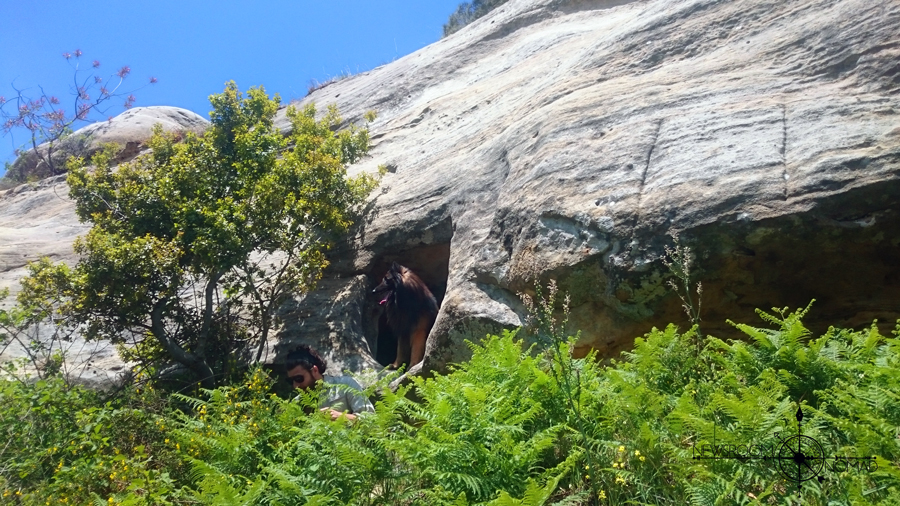
Valeriana discoroidis, Italian Valerian, Arabic: ناردين، أصابع الراعي
Native to Mediterranean woodlands and shrublands, and semi-steppe shrublands, Valerian flower extracts were used as a perfume in the 16th century. Valerian (the flower, not the steel) is most commonly used for sleep disorders, including insomnia and conditions connected to anxiety and psychological stress including nervous asthma, headaches, migraine, and stomach upset. The root of the plant is most commonly used for it’s medicinal value. The herb was used by the Greeks for several common ailments. Dioscorides, the Greek physician, used Valerian for conditions with the liver, the urinary tract, and the digestive tract. Arab physicians even advocated the use of the herb to patients. The European Medicines Agency (EMA) approved the claim that Valerian can be used as a traditional herbal medicinal product in order to relieve mild symptoms of mental stress and to aid sleep.
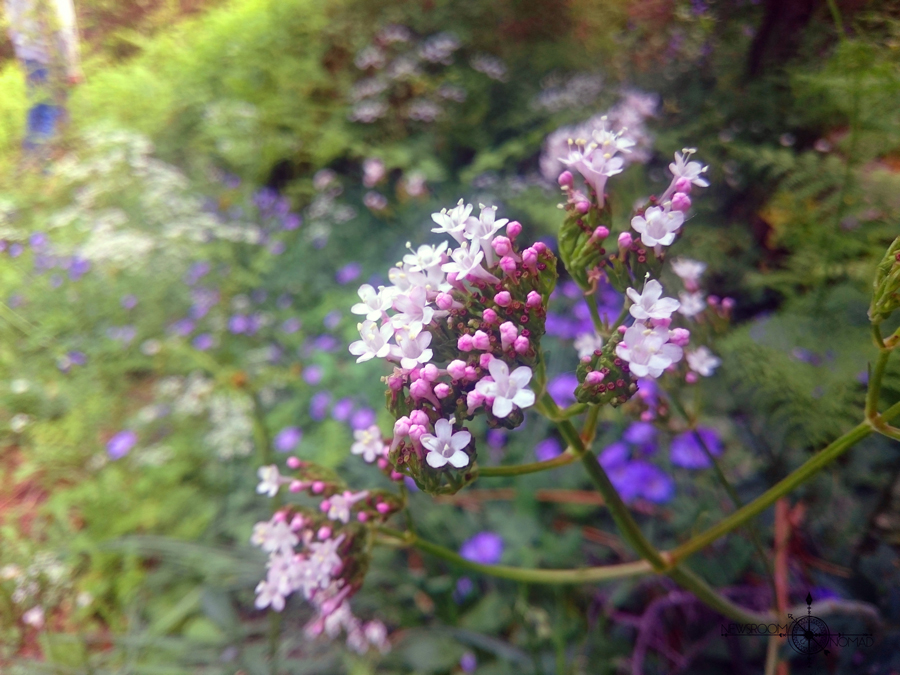
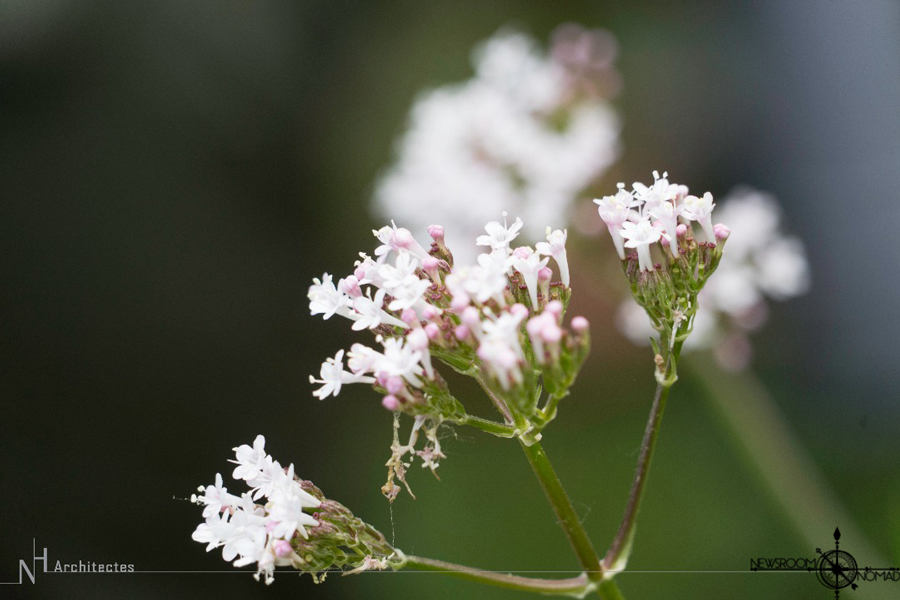
Platanus orientalis, Plane trees, Arabic: دلب
Hippocrates, the “Father of Medicine” is said to have taught his students underneath the shade of a plane tree in Kos, Greece. The Athenian Academy, outside Athens, is said to have featured a sacred grove of planes where the students listened to the masters and practiced philosophy. In folk medicine, the leaves of the plane trees are boiled into a decoction and used to treat dysentery. A cream made from the leaves can also be used to heal wounds. As for the bark, pieces can be boiled in vinegar and then used in the treatment of diarrhea, dysentery, hernias and toothache.
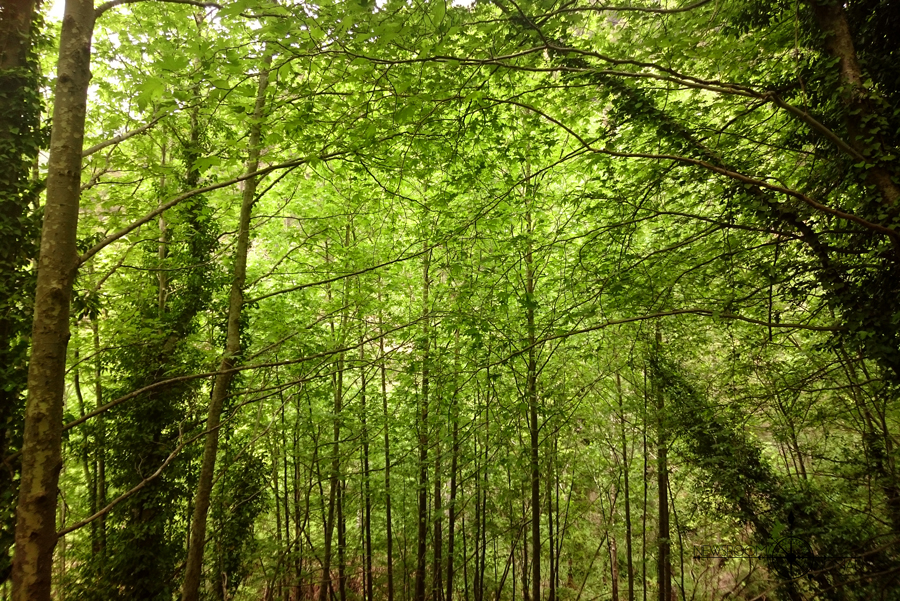
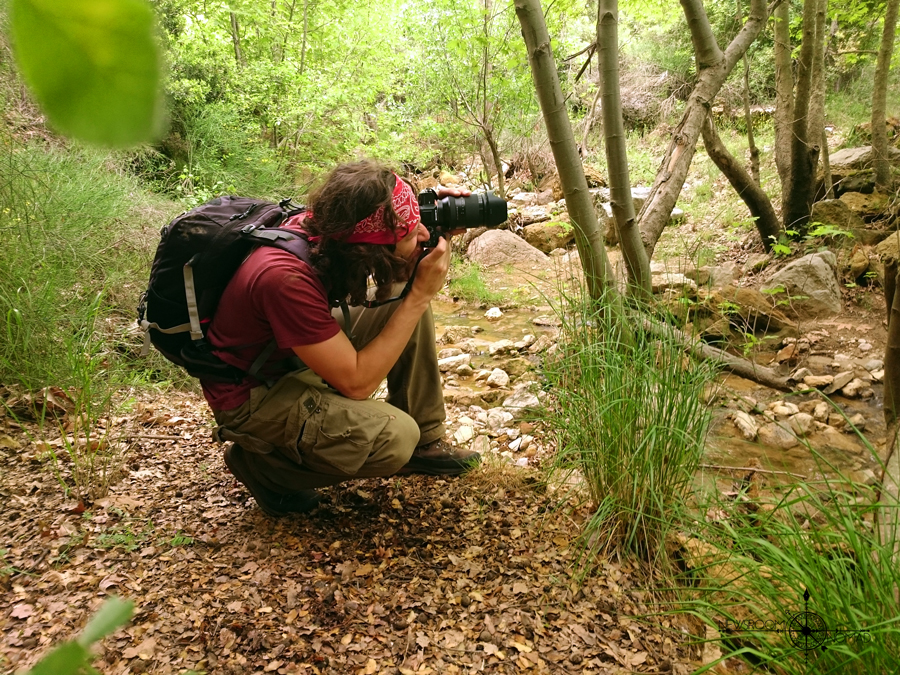
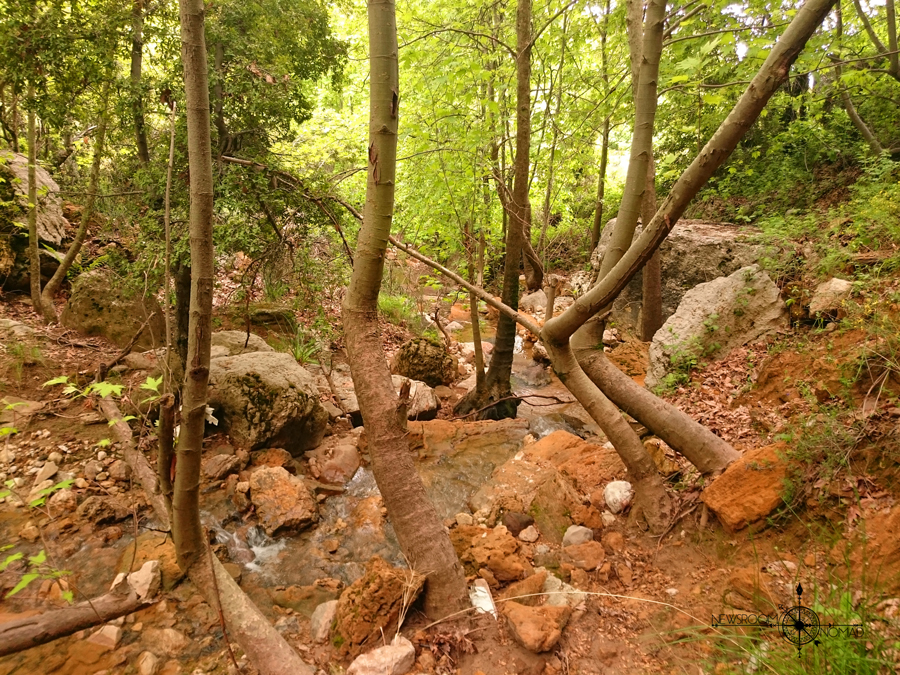
Anacamptis pyramidalis, the Pyramidal Orchid, Arabic: سحلب هرمي
Native to southwestern Eurasia, the Mediterranean region eastwards to Iran, all this hardy plant requires is lots of sunshine and diverse soils: loamy or clay. It can even grow on very alkaline soil and can be found on meadows or dry and well exposed slopes. According to the Wild Life Trusts, this orchid can even grow in abandoned quarries. Can you imagine Lebanon’s sand and stone quarries covered with these?
Rich in mucilage, this orchid is used in the treatment of irritations of the gastro-intestinal canal.
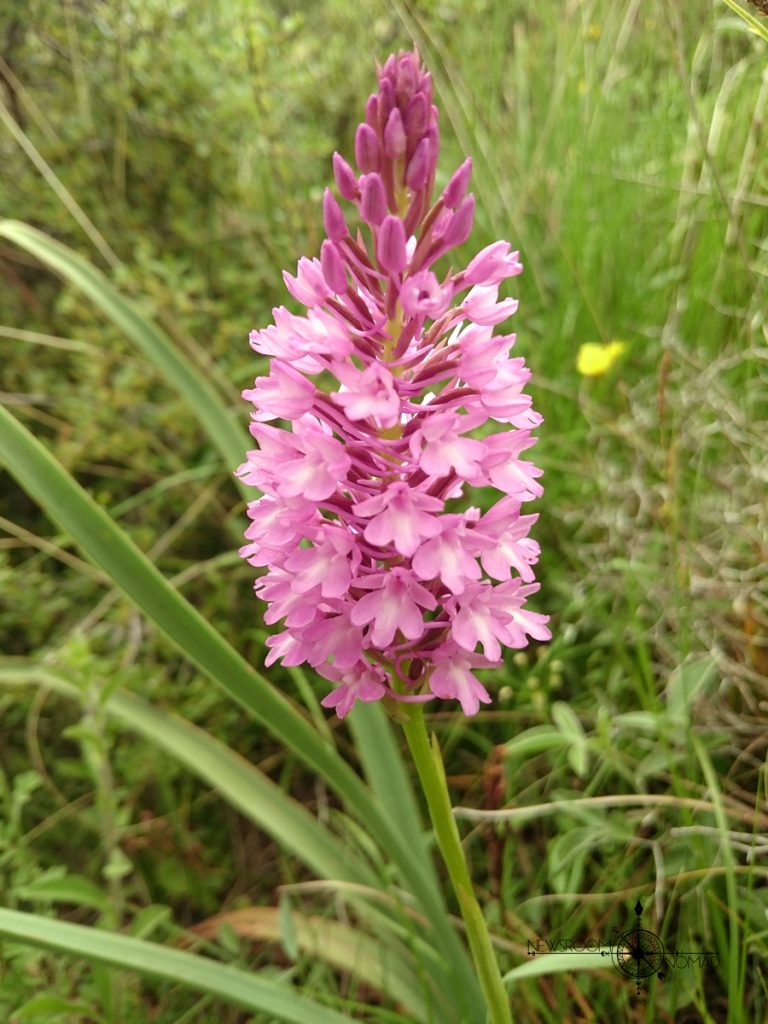
And more views …
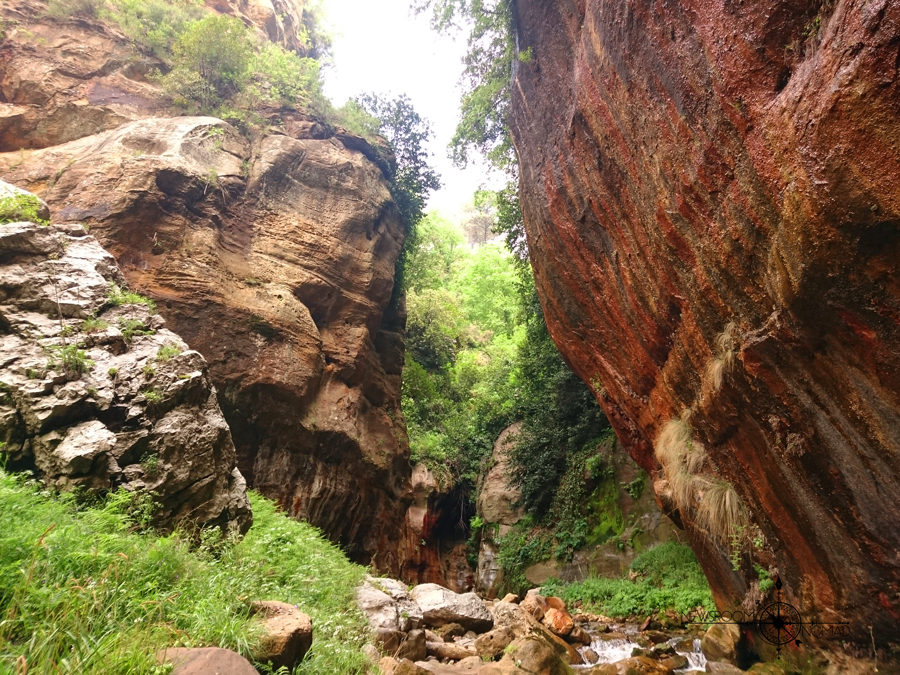
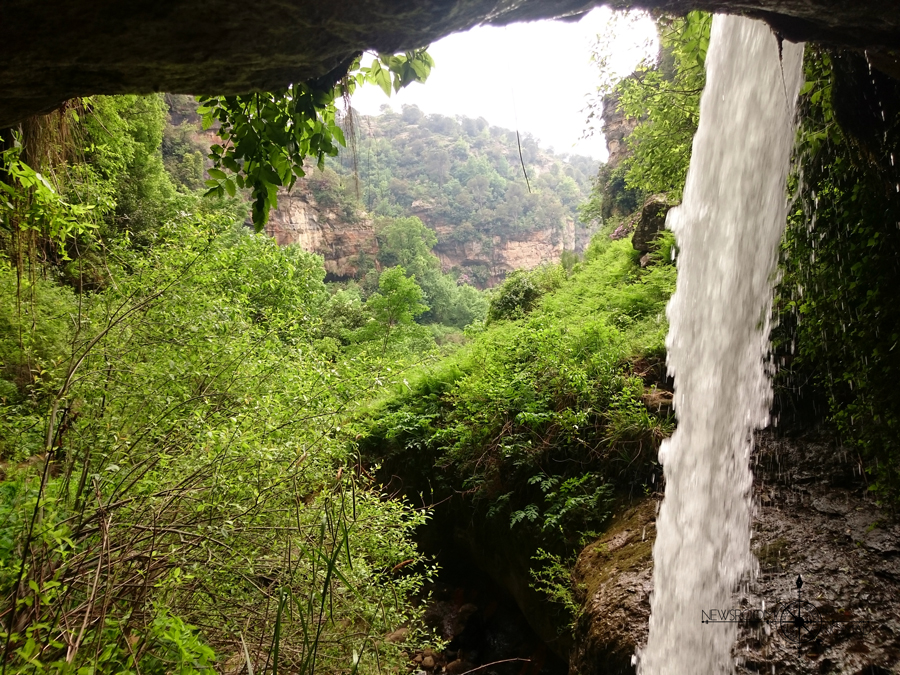
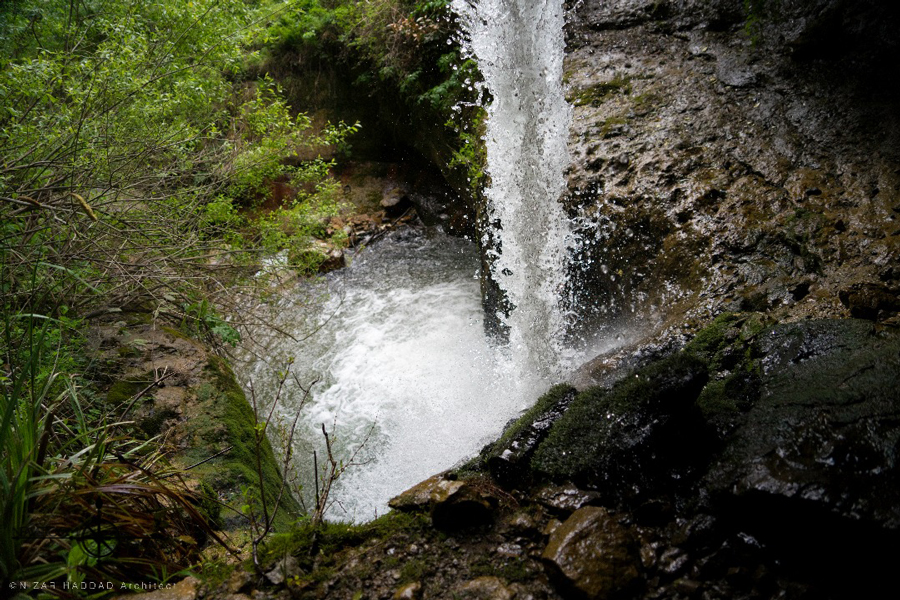
Rhododendron ponticum, Pontic Rhododendron, Arabic: ردندرة
The Pontic Rhododendron is a species of Rhododendron found in southern Europe and southwest Asia. It’s an invasive, poisonous plant that contain toxins such as andromedotoxin, grayanotoxin, rhodotoxin and acetylandromedol. Its nectar is believed to have the highest concentration. Not recommended for beekeeping and cattle grazing as it may kill the animals. If bees consume their nectar in large quantities they can die, or just live long enough to produce a toxic honey (aka ‘mad honey’).
In some parts of the world, like Turkey and Nepal, if a controlled dosage of the honey is taken, it can be used to induce hallucinations for spiritual or psychological gain. Some purchase the ‘mad,’ bitter tasting honey as traditional medicine and use it to treat a variety of ailments, including arthritis, diabetes, and sexual dysfunction at the risk of being poisoned.
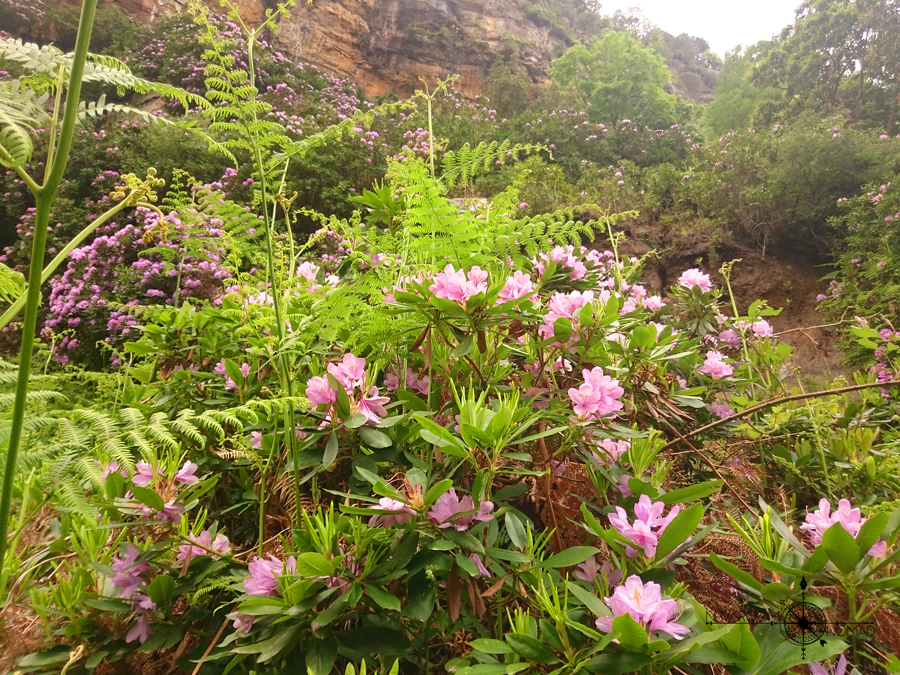

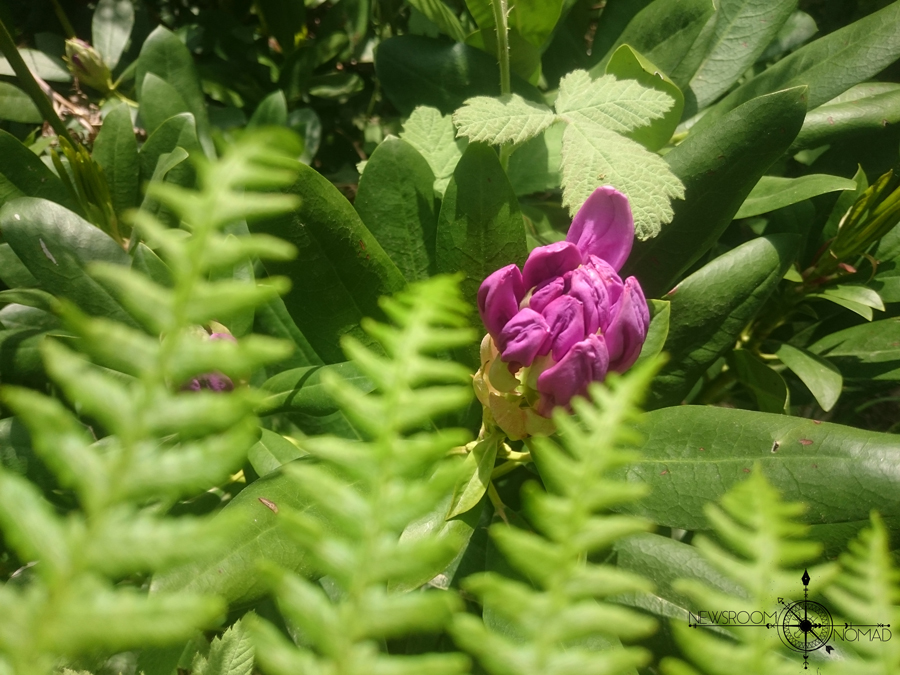
Leopoldia comosa, Purple Grape Hyacinth, Tassel Hyacinth, Arabic: بصل الزيز
Distribution: Mediterranean woodlands and shrublands. Flowering period: February, March, April. According to eattheweeds, a website that’s all about foraging, the Tassel Hyacinth, Leopoldia comosa, is used extensively, particularly in Italian and Greek cooking. The bulbs are boiled then pickled or preserved in extra virgin olive oil. They are thought to stimulate the appetite and are also a diuretic.
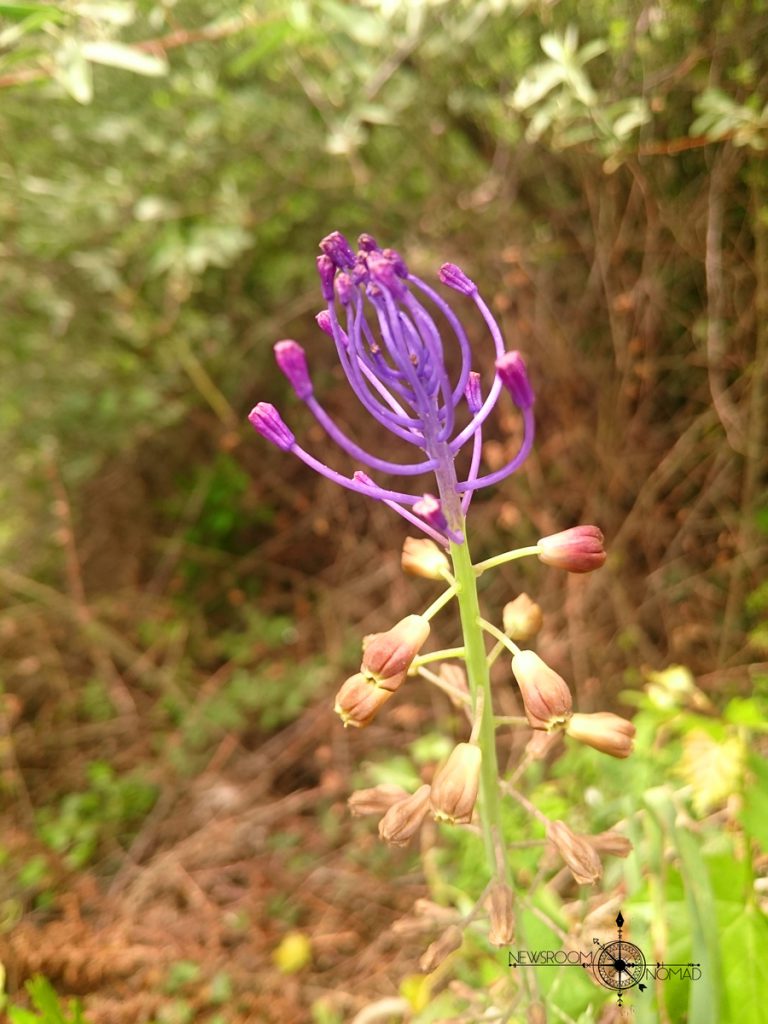
Asphodelus albus, or ramosus, common name white asphodel, Arabic: البيرق، البصيل
White asphodels are native to the Mediterranean. This wild flower was once associated with mourning and death in ancient Greece. Its presence was held to facilitate the transition of the dead to Elysium, and it is a feature of the Asphodel Meadows. According to Perry L. Westermoreland’s Ancient Greek Beliefs, the shade of Achilles strides across a meadow in Hades full of asphodel flowers.
The roots, dried and boiled in water, yield a mucilaginous matter that in some countries is mixed with grain or potato to make Asphodel bread. In Spain and other countries they are used as cattle fodder, especially for sheep. In Iran glue is made with the bulbs, which are first dried and then pulverized. When mixed with cold water, the powder swells and forms a strong glue. The Greeks and Romans used them to treat several diseases, but they are not employed in modern medicine. Do not attempt to eat the roots as they can be highly poisonous if not prepared properly.
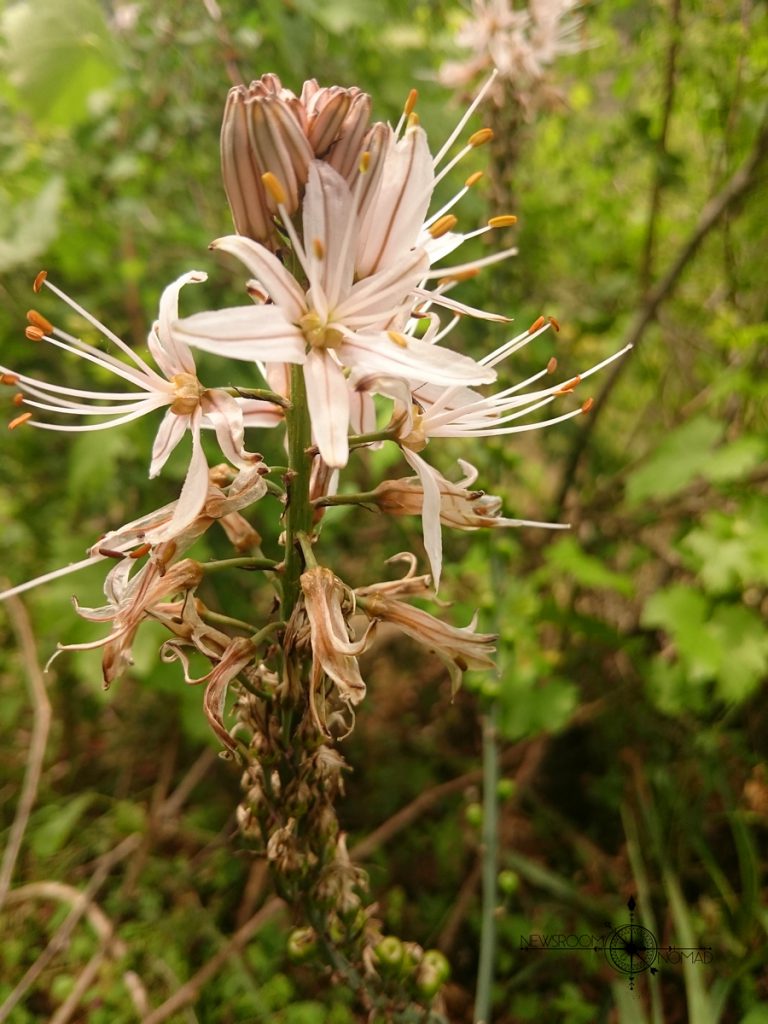
Rosa canina, commonly known as the dog rose, Arabic: ورد جوري بري , نسرين
Native to Europe, the Mediterranean, northwest Africa, and western Asia, the deciduous shrub produces a red-orange fruit, also known as hip. High in antioxidants and vitamin C, the hips are used to make syrup, tea and marmalade. The benefits of rose hips have been known since ancient times and the plant was used by the Greeks, the Persians and the Romans. The hips also have mild laxative and diuretic properties and can help treat urinary infections. They are an excellent supplement for menstruating women too because of their iron content. Dog rose hips are good for stomach disorders including stomach spasms, stomach acid deficiency, preventing stomach irritation and ulcers and as a “stomach tonic” for intestinal diseases, according to Herbal Greece. Rose hips begin to form after successful pollination of flowers in spring or early summer, and ripen in late summer through autumn. In case you’re wondering what rose hips look like, I’m posting a photo I found on the internet underneath this one.
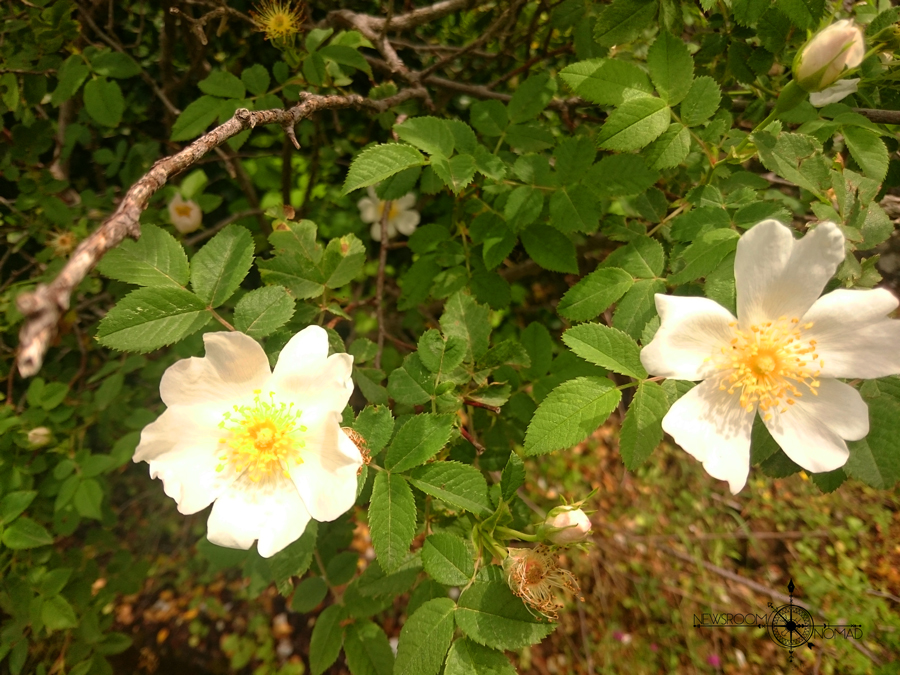
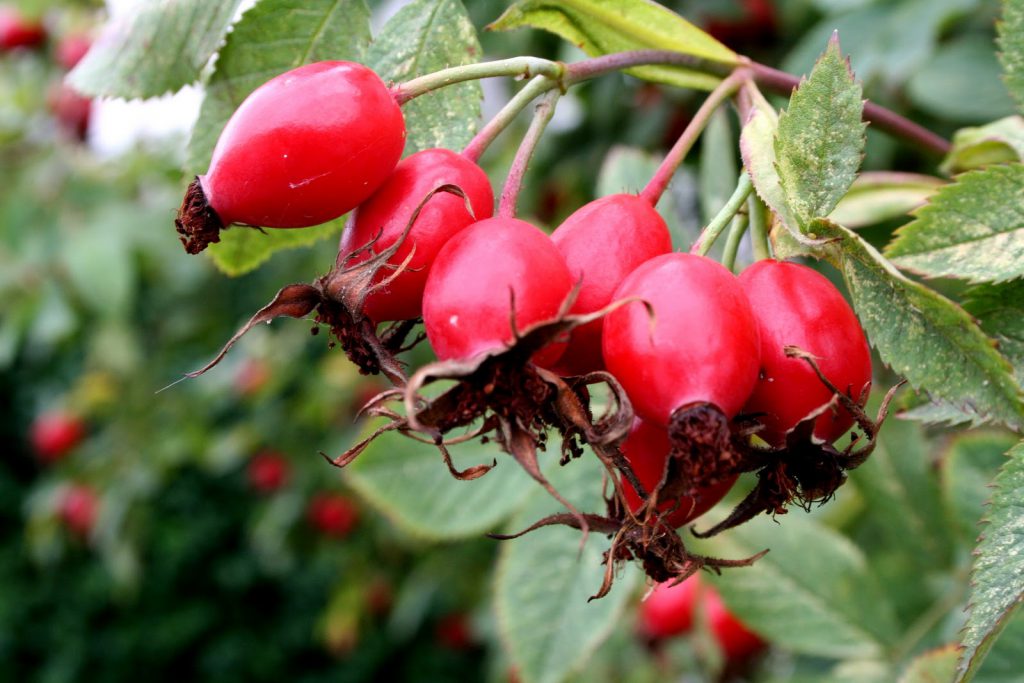
An actual dog, also known as Ikki The Phoenix
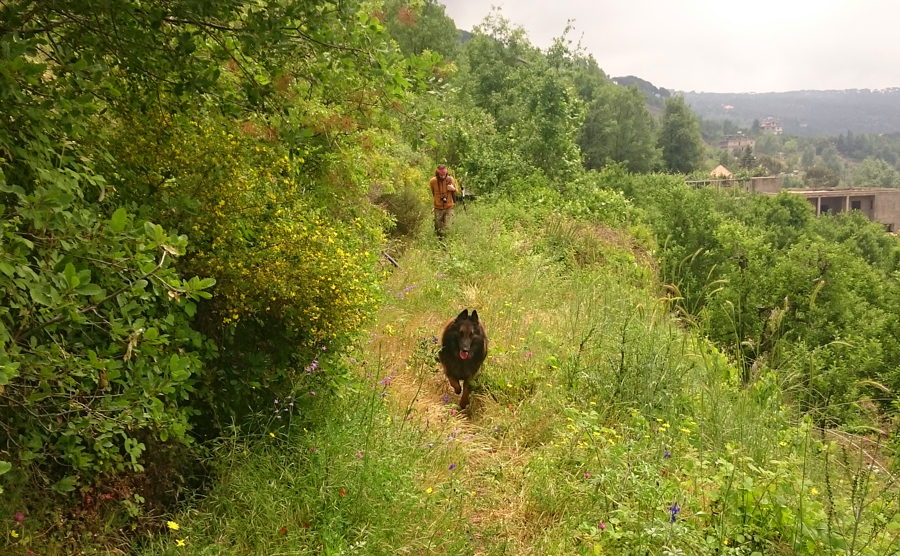
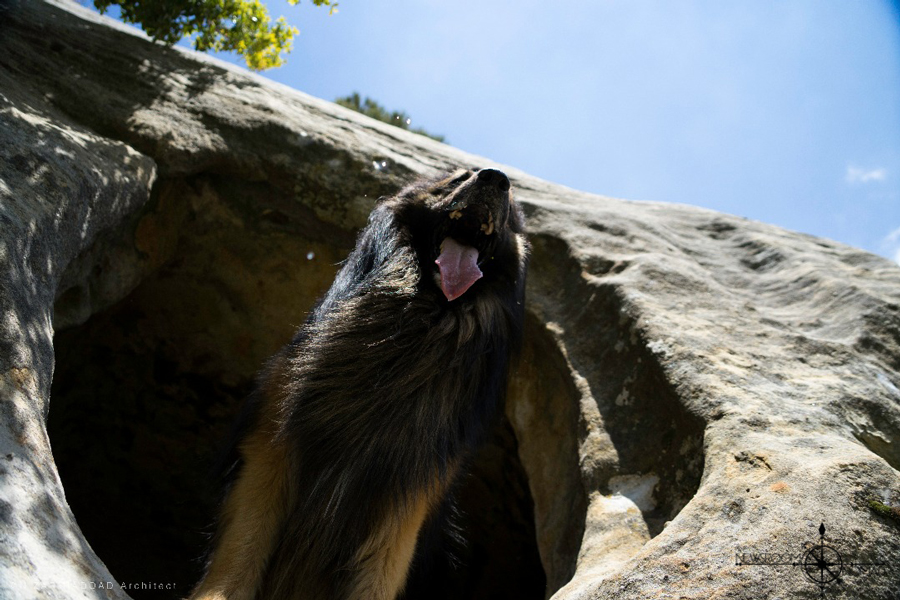
Papaver rhoeas, Red Poppy, Arabic: الخشخاش الأحمر
Red poppies are native to southern Europe, North Africa, the Middle East and temperate regions of Asia, but can now be found around the world were the climate is suitable. They bloom between May and August and have a special opium-like scent when they are fresh, but become odorless when they are dried. Petals contain alkaloids (papaverine, rhoeadine, isorhoeadine, rhoeagenin to name a few). Alkaloids in red poppy are similar but not identical to those found in the opium poppy, but they are weaker in effect and are considered to be non-addictive. The flowers and seeds are used in folk medicine. Newly opened flowers, plucked and dried in the shade can be used in extracts, herbal teas and cough syrups. Red poppies are used for their weak anesthetic, analgesic, relaxing and mild sedative properties. Apart from the petals and seeds, all parts of the red poppy are slightly toxic.

Trifolium purpureum, Purple Clover, Arabic: نفل قرنفلي
Native to Mediterranean woodlands and shrublands, and semi-steppe shrublands the purple clover, and Trifolium species in general, are used in folk medicine as a wound healing agent, expectorant, antiseptic, sedative and to alleviate pain in rheumatism. They are also used to cure coughs. As an expectorant, the purple clover is used to help with asthma. When applied externally, it can heal skin problems including irritation caused by insect stings and bites, eczema, psoriasis and wounds. The flowers are the parts of the herb used, either fresh or dried. Clovers contain Vitamin A, iron, chromium, magnesium, phosphorous, potassium, Vitamin C and some of the B-complex vitamins, as well as calcium.
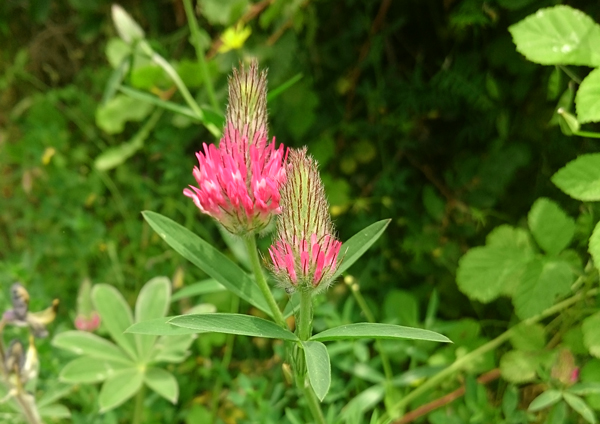
Lupinus micranthus, Bitter Blue Lupin, Arabic: الترمس دقيق الأسدية
Also known as the small-flowered Lupine and the Hairy Lupin, this Mediterranean native blooms in March and April. It grows in woodlands and shrublands and produces a red-brown legume/seed. Its name in Latin lupus, meaning “wolf,” stems from the belief that these plants destroyed the fertility of the soil, which is the opposite of the truth. According to Botanical, the plant is of Egyptian or East Mediterranean origin, and has been cultivated since the days of antiquity. It’s now used for forage, for ploughing-in to enrich the land, and for its seeds especially in Mediterranean countries and the Middle East where they are eaten.
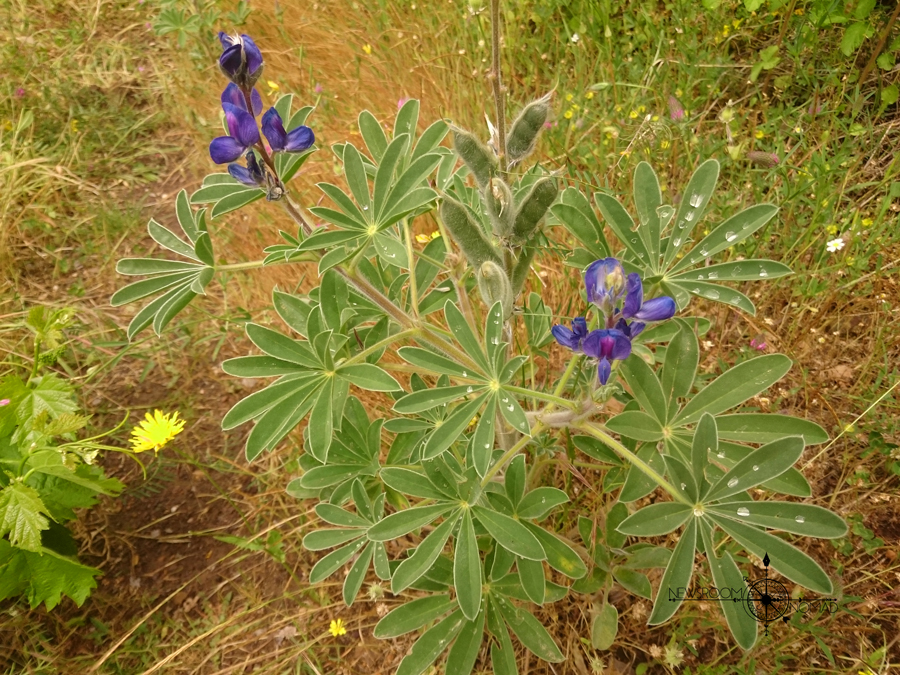
Drosera rotundifolia, Sundew, Arabic: الندية
Commonly known as the Sundew, the Drosera is one of the largest genera of carnivorous plants. The members of Droseraceae family attract, arrest, and absorb insects through stalked mucilaginous glands spread over the surface of their leaves. When dried it can be used to make medicine in the form of decoctions or tea for various breathing problems including bronchitis, asthma, whooping cough (pertussis), windpipe infections (tracheitis), coughing fits, and dry cough and stomach ulcers.
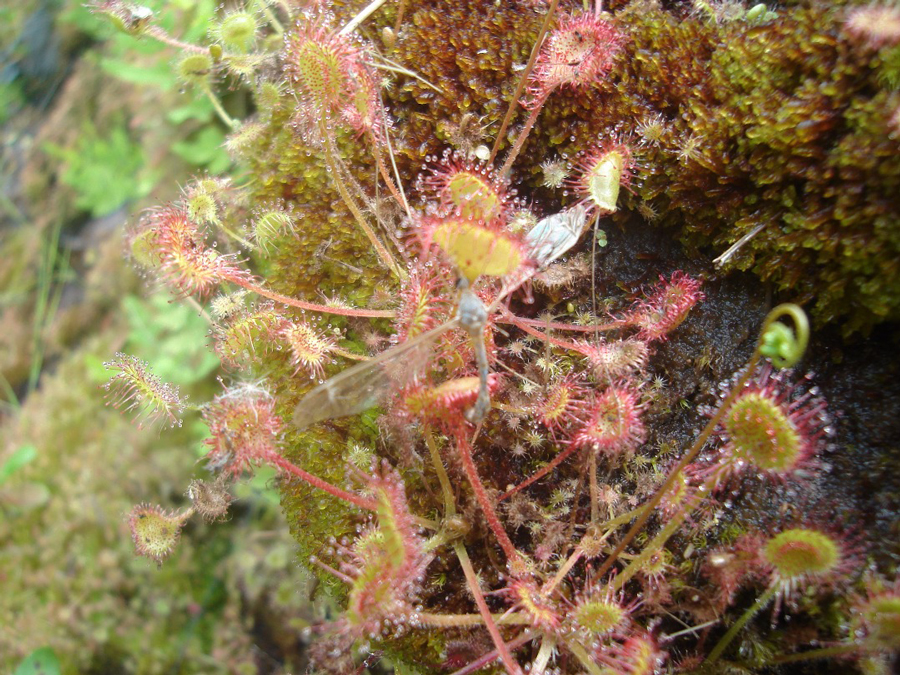
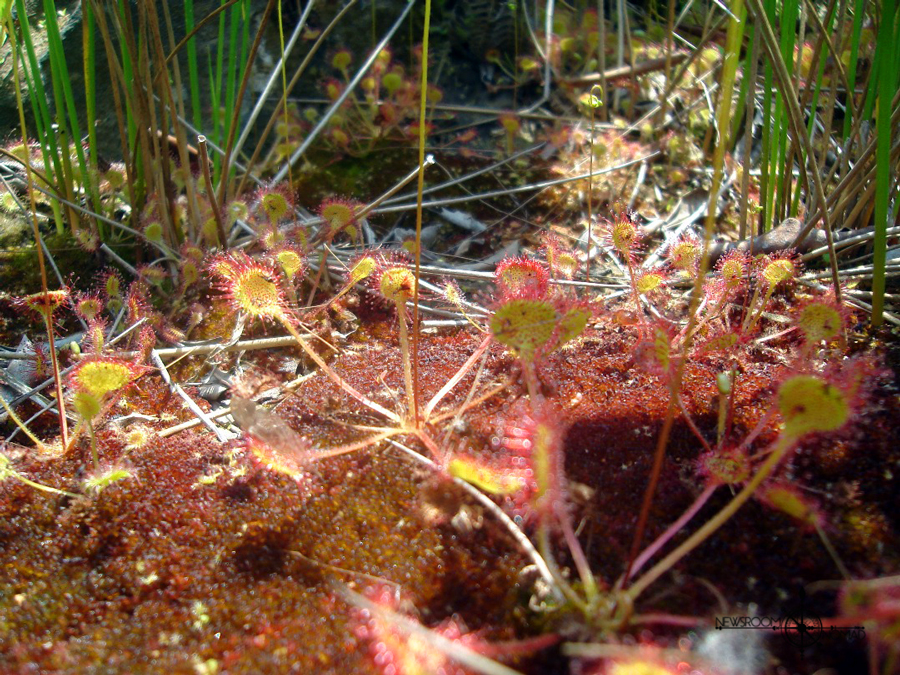
Equisetum telmateia, Giant horsetail, Arabic: جنس الكُنباث
Equisetum telmateia is a herbaceous perennial plant, with separate green photosynthetic sterile stems, and pale yellowish non-photosynthetic spore-bearing fertile stems. It develops extensive underground rhizome systems and can extend more than 4 m deep into wet clay soil. You can usually find it above flowing groundwater, rivers and streams. It is often referred to as a ‘living fossil’ as it is the only living genus of the entire class Equisetopsida, which for over one hundred million years was much more diverse and dominated the understory of late Paleozoic forests. The herb’s high silica makes it abrasive, and was used from the Middle Ages until the 18th century for scouring pots and pans.
According to Botanical, the plant was also used as a diuretic and astringent. A decoction of it applied externally will stop the bleeding of wounds and quickly heal them, and will also reduce the swelling of eyelids.


Conium maculatum, Poison hemlock, Herb bennet, Mother Die, Arabic: شقرون
Don’t let looks deceive you. This innocent looking flower is a highly poisonous biennial herbaceous flowering plant in the carrot family Apiaceae. Native to Mediterranean woodlands, shrublands, and semi-steppe shrublands, the Poison Hemlock is believed to have been the plant whose toxins killed Socrates. Conium maculatum is known by several common names including the Irish devil’s bread or devil’s porridge, and poison parsley.
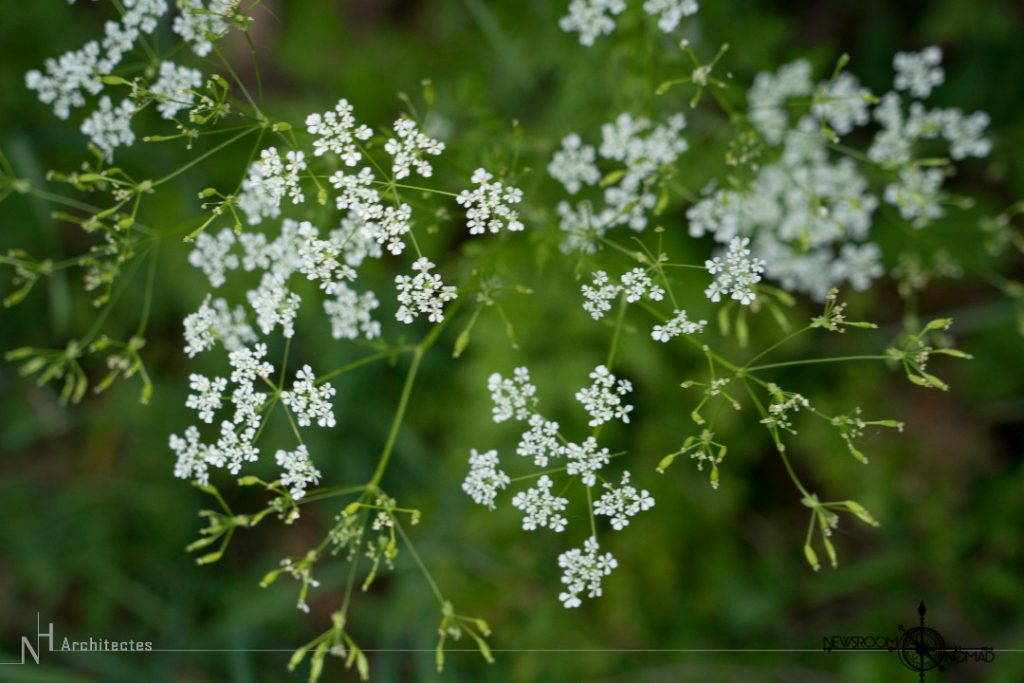
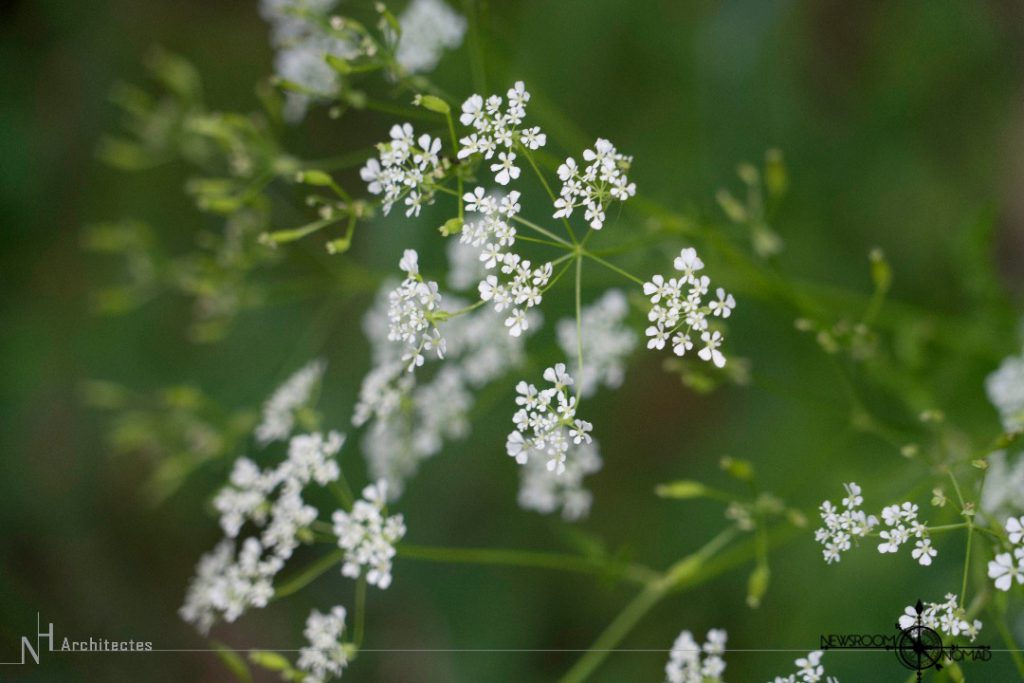
Now for some fauna…
Coccinella septempunctata, 7 spotted ladybug, Arabic: دعسوقة خنفساء صغيرة
The 7 spotted ladybug is the most common of coccinelles. This small beetle is super beneficial for farmers as it feeds on many other invasive insects that harm crops, especially aphids (المنة), whitefly, mealybugs and other sap feeders.

Adscita statices of the Zygaenidae family, also known as the Forester
This beautiful blue moth, commonly known as the forester, flies in sunshine feeding on flowers. It thrives in open habitats, damp grassland, chalk downland, and heathland. It is often mistaken for a butterfly because it visits flowers during the day. Here it is seen on an asphodel that has yet to bloom.

Lycaena sp., common copper, Arabic: فراشة النحاس
The common copper butterfly is known to love the sun. They frequently sun themselves, resting on flowers like in the photo below. They are active from early morning until dusk and mate between early Spring and Autumn. They communicate visually, and use touch during courtship. Male coppers perch on the tops of leaves and flowers in low spots, awaiting females to pass by. They differentiate the females by their wing pattern and span. Common coppers are minor pollinators. They also serve as a food source for a variety of predators, including praying mantis, lacewings, ladybird beetles and the sundew plant. (A major thank you to entomologist Layla al-Hajj for this one!)
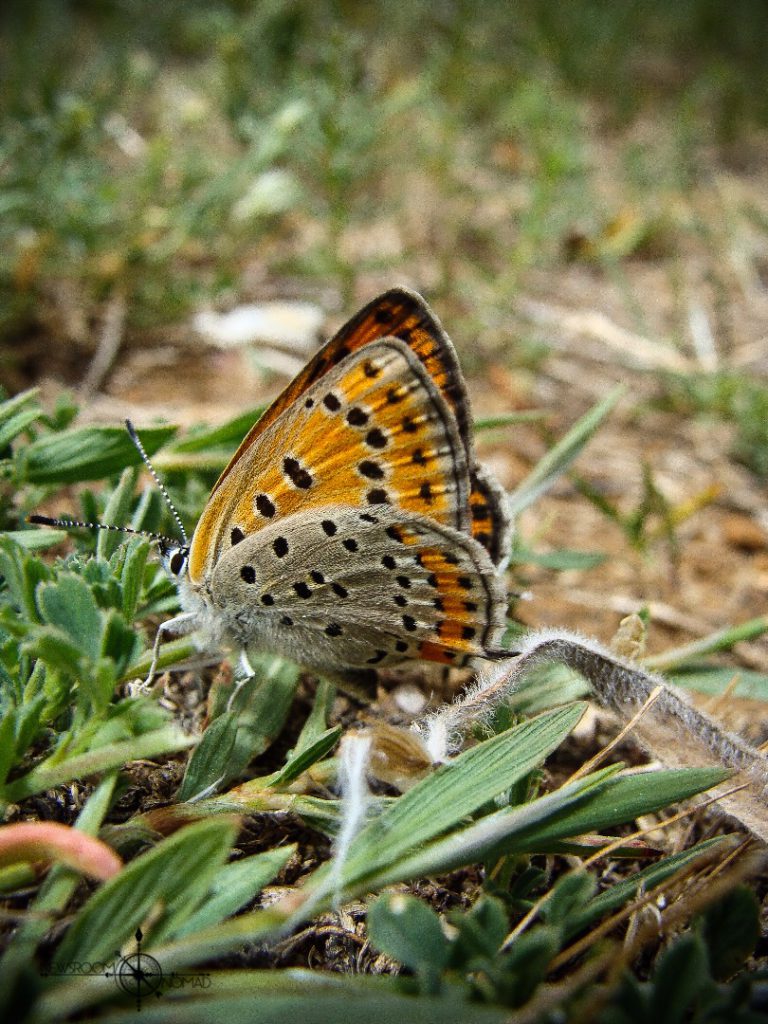
Latrodectus tredecimguttatus, the Mediterranean Widow Spider
This spider isn’t hard to recognize. With its distinctive orange markings on its abdomen, it’s one you don’t want to mess with. Like the Black Widow, only bigger, its bite can induce intense delayed pain, watery eyes, sweating, muscle spasm, breathing difficulties and irregular heart rate, nausea and vomiting. As with the Black Widow, deaths are under 5% of those bitten and it’s usually the weak who succumb.
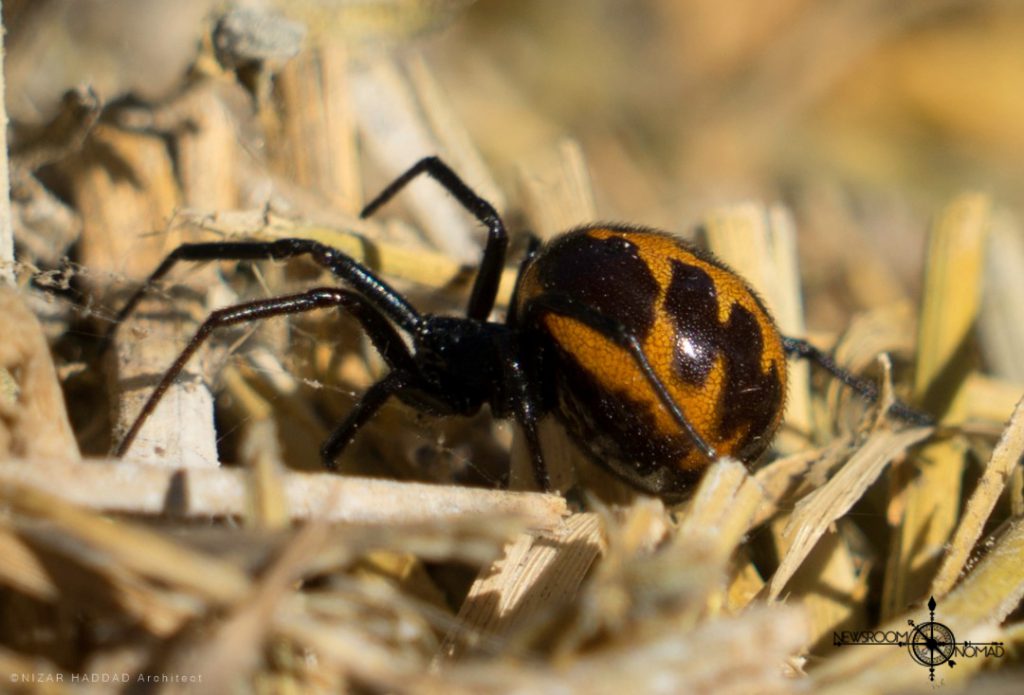
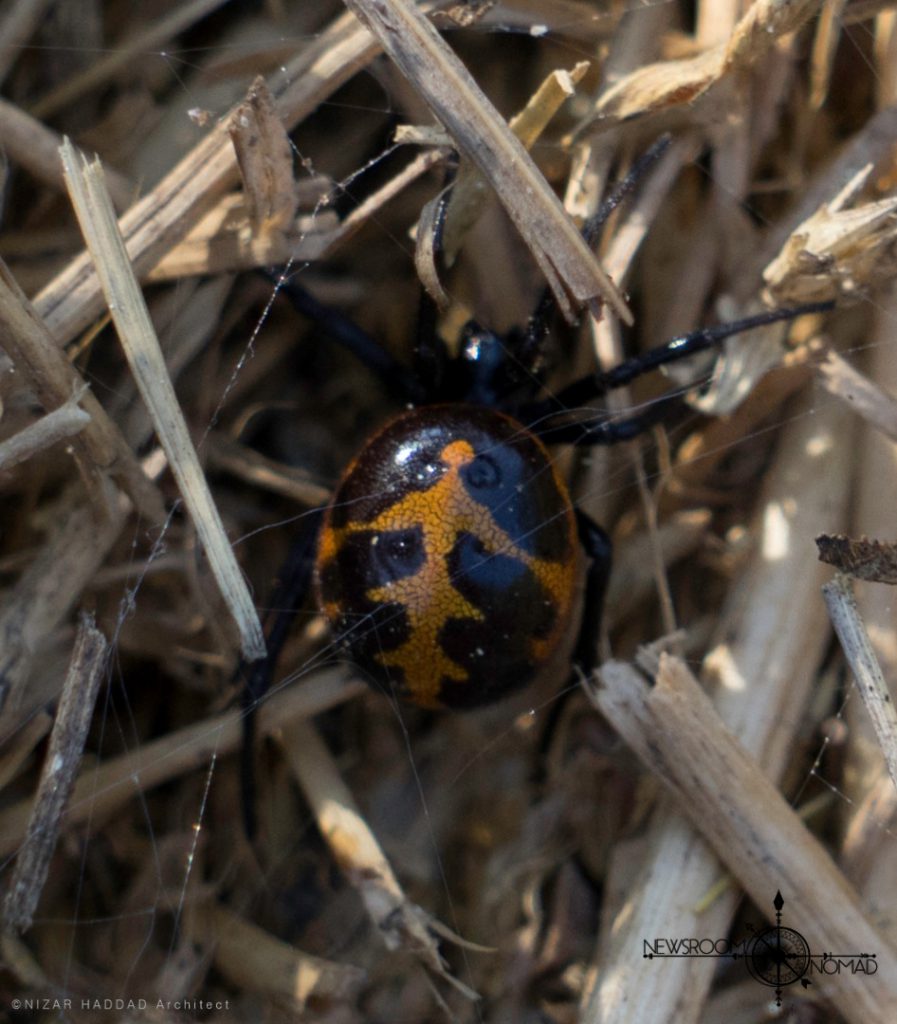
Vipera palaestinae, Palestinian viper
An earlier version of this post incorrectly identified this snake as a Black whip snake (Dolichophis jugularis) due to its color. According to snake enthusiast Mahmoud al-Hajj, this is in fact a highly venomous Palestinian viper, so do keep a safe distance! While Palestinian vipers are usually lighter in color, the reason this one appears black is because it is currently shedding its skin, hence the tilted head. (Thank you Mahmoud for pointing that out!) Palestinian vipers are found in northern and central Palestine, western Syria, northwestern Jordan, and Lebanon. They feed on small mammals, frogs, toads, birds, lizards and large invertebrates.
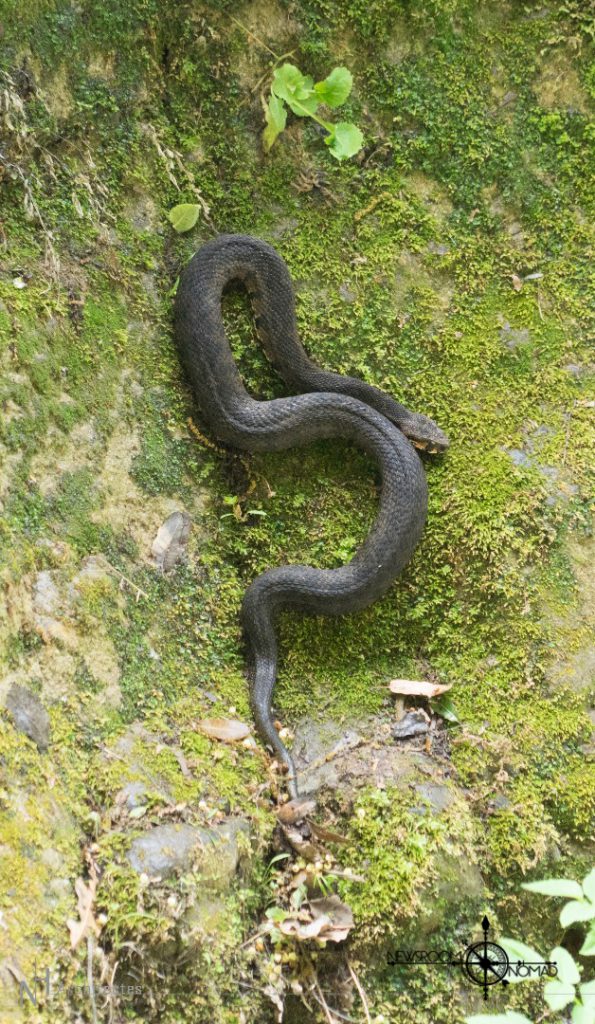
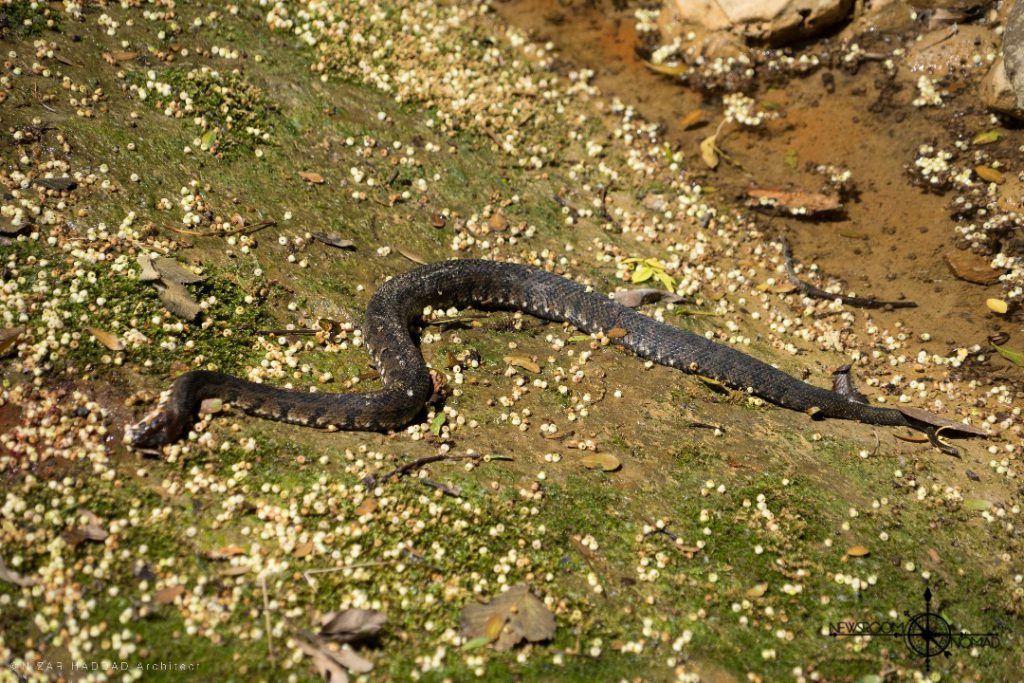
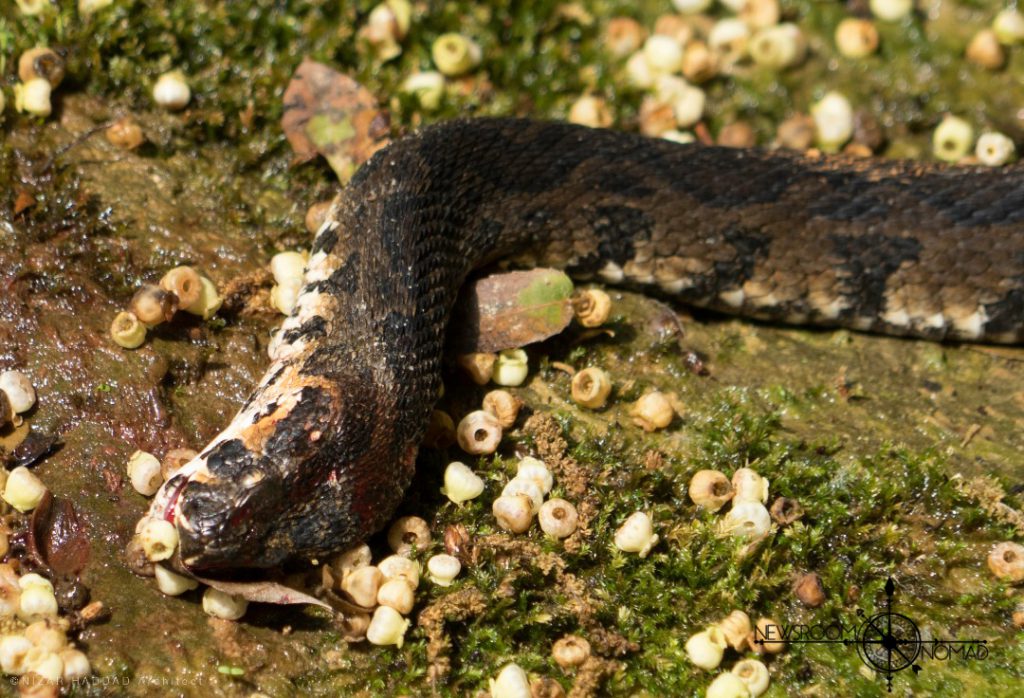
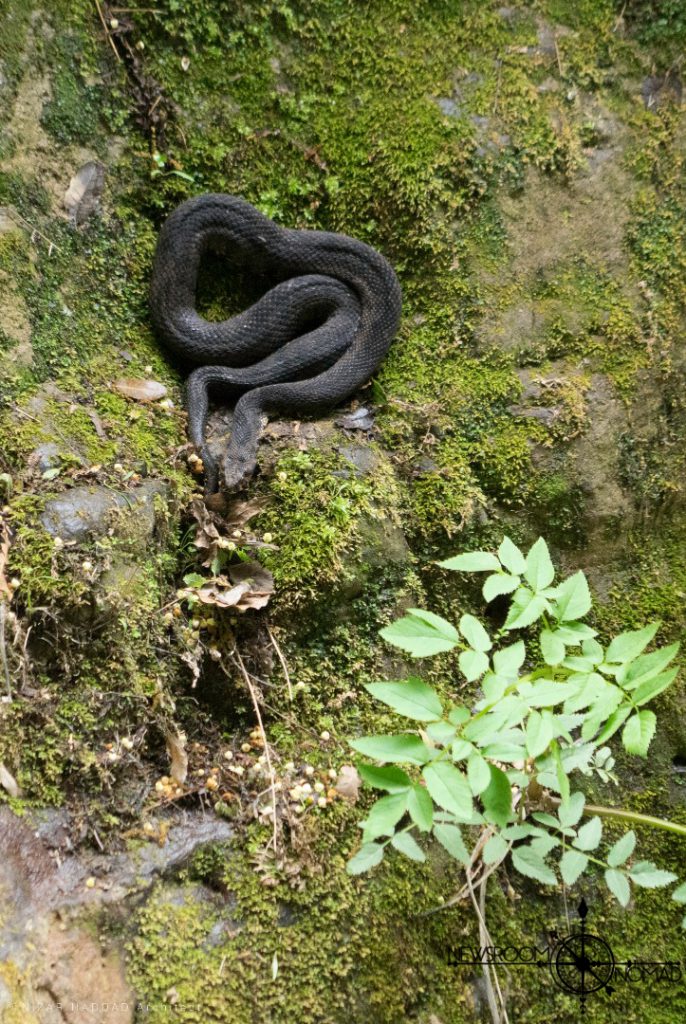
This is what a Black whip snake actually looks like.

Unlike the Palestinian viper, Black whip snakes are completely harmless. Although if threatened it will bite, it is not venomous. Common to the Mediterranean, the black whip can grow up to 3 meters in length and change color from brick with dark brown spots to black as it gets older (5-6 years). It feeds on small mammals, birds, lizards, large insects and even other venomous snakes including the extremely venomous blunt-nosed viper (locally referred to as ‘the blonde’ or ‘7ayye sha2ra’), which is why farmers in the olden days would buy these snakes and place them on their land as a means to naturally control pests.
This region in Baskinta was previously explored by a team from USJ for its exceptional biodiversity richness in order to create a micro-reserve to protect a rare carnivorous Sundew plant Drosera rotundifolia found in bogs, marshes, and ferns.
The University of Saint-Joseph (USJ) is working to conserve rare or endemic plant species in Lebanon under a CEPF-funded project “Determination of Important Areas for Plants and Creation of Micro-Reserves to Conserve Rare or Endemic Species in Lebanon”. This project is led by Professor Magda Bou Dagher Kharrat, head of Life and Earth Science Department at the Faculty of science.
